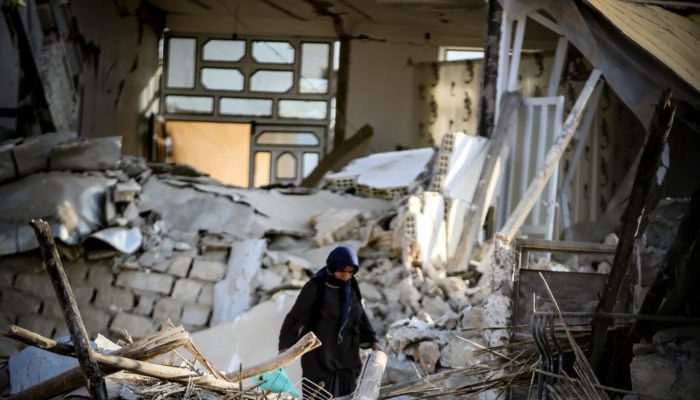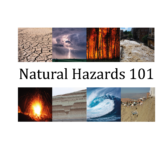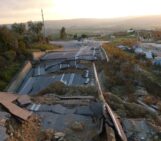
Mahatma Gandhi once said, “The future depends on what you do today”. In the past months, we have witnessed extreme weather events, wildfires, earthquakes, and volcanic activity in different parts of the world. Although this activity is ordinary for a living planet like Earth, it can disturb the modern way of living and put people at risk. Even for the events that can be predicted with a higher degree of certainty, the level of preparedness, at an individual level, depends to a certain extent on how aware people are of the risk. How can our knowledge about natural hazards shape our risk awareness, and how can we shape society’s beliefs by building a risk-aware culture?
Risk conceptualisation is considered an important parameter when discussing risk prevention and mitigation actions or in the context of emergency management. There is extensive scientific work about how people perceive risk based on their understanding and their experiences [1, 2] and how perceptions can drive action and influence behaviours before, during or after the occurrence of a hazardous event [3].
In many cases, people exposed to natural hazards, like floods, earthquakes, wildfires, tend to be more aware of the risk. As a result, they are more open to receiving information about the causes of risk and what they can do to be better prepared should the hazard occur again in the future [4]. Previous personal experience with hazardous events shapes beliefs about natural hazards and how people interpret the associated threat and elevates the concern about the related risk [5]. The above suggests that raising awareness of the potential risk where there is previous experience may not be as challenging compared to cases where the risk is not evident or where there is no prior experience.
How we feel about risk is also an important parameter. This may also relate to how we feel about the process of changing to address the potential risk, like in the case of climate change adaptation. One of the main factors that drive societies to adapt and/or to prepare for the impacts of climate change relates to whether there is public acceptance of climate change [6]. This involves how climate change is understood and how people feel about it. From this aspect, related risk can be seen from two different perspectives: our knowledge and understanding and how we think about it.
Typically, when scientists discuss natural hazard risk prevention, one of the main assumptions is that people have sufficient knowledge about natural hazards and their impact on modern societies. This assumption entails solid scientific knowledge to be communicated so that everyone can easily understand, not only scientists or policymakers.
Having appropriate knowledge about natural hazards can raise risk awareness, shape how we feel about the related implications, and drive action to prepare for and minimise the consequences at a personal or societal level. For instance, in regions prone to earthquakes, there is usually a mechanism in place to raise awareness about the risk, minimise the impact and prepare for an effective emergency response when the event occurs. At a state level, this may include, amongst others, having relevant building codes, retrofitting older structures, and having an earthquake preparedness plan, while, at a personal level, knowing what to do before, during and after an earthquake. Building that awareness requires knowledge and understanding of the level of risk and the direct and indirect consequences of an earthquake.

Kermanshah earthquake 2018. (Photo credit: Moein Rezaalizade on Unsplash, Unsplash License)
Building a risk-aware culture
Considering that a risk-aware culture is fundamental to developing responsible behaviour regarding natural hazard risk, we need to find ways to create a more knowledgeable risk conscious society. This consciousness will support our ability to build resilience and adapt, anticipate, plan, and reduce the risk, protecting people and livelihoods.
There is significant work on the importance of education in supporting people in developing skills and knowledge that strengthen their capacity to anticipate risk. Undoubtedly, education can build our thinking and risk assessment capabilities, heightening our awareness and interpreting previous experience into future preparedness. All this together can increase disaster readiness and reduce our vulnerability to natural hazards [7, 8].
Considering that people resist cultural changes in many cases, which may also apply to how they comprehend risk, the provision of information can become a catalyst. It can enable the transfer of knowledge through social interaction and open dialogue with different societal groups, supporting the development of a more risk-aware attitude. For example, in the field of pro-environmental behaviour, various studies have demonstrated that people tend to present a positive attitude towards the environment when provided with relevant information [9].
However, as easy as this may sound, it may not be a straightforward process. A key question to address is how much information people need to raise their awareness on the risk and how can science influence this. Enabling people to understand abstract theories relating, for example, to vulnerability to harm or loss can become challenging due to the complexity of the concept. Also, information for one person may be complicated to retain for others as they may be missing the context needed to comprehend or make full use of it [10]. Another issue for consideration is how scientific knowledge is communicated and how this knowledge will be used considering the values and interests of the different societal groups.
Undoubtedly, transformation is needed to adjust our current thinking in response to natural hazard occurrences or their effects. Shaping our culture to become more risk-aware can shift the way we anticipate risk allowing a more responsible behaviour regarding preparation and response or even quick recovery after the hazard occurs. The main question for the scientific world is whether we are doing enough to support society to develop more resilient thinking.
References
[1] Roder, G., Hudson, P. and Tarolli, P. (2019) ‘Flood risk perceptions and the willingness to pay for flood insurance in the Veneto region of Italy’, International Journal of Disaster Risk Reduction. Elsevier Ltd, 37, p. 101172. https://doi.org/10.1016/j.ijdrr.2019.101172.
[2] Slovic, P. (1987) ‘Perception of Risk’, Science, 236, pp. 280–285. Available at: http://science.sciencemag.org/ (Accessed: 13 December 2019).
[3] Etkin, D. and Ho, E. (2007) ‘Climate change: Perceptions and discourses of risk’, Journal of Risk Research, 10(5), pp. 623–641. https://doi.org/10.1080/13669870701281462.
[4] Rohrmann, B. (2008) ‘Risk perception, risk attitude, risk communication, risk management: a conceptual appraisal’, in TIEMS 15th Annual Conference. Prague: The International Emergency Management Society (TIEMS). Available at: https://tiems.info/index.php/our-archives/2008-reports/76-tiems-2008-reporting (Accessed: 9 October 2021).
[5] Lorencová, E. K., Loučková, B. and Vačkářů, D. (2019) ‘Perception of climate change risk and adaptation in the Czech Republic’, Climate, 7(5). https://doi.org/10.3390/cli7050061.
[6] Carlson, K. and McCormick, S. (2015) ‘American adaptation: Social factors affecting new developments to address climate change’, Global Environmental Change. Pergamon, 35, pp. 360–367. https://doi.org/10.1016/J.GLOENVCHA.2015.09.015.
[7] Didham, R. J. and Ofei-Manu, P. (2020) ‘Adaptive capacity as an educational goal to advance policy for integrating DRR into quality education for sustainable development’, International Journal of Disaster Risk Reduction. Elsevier, 47, p. 101631. https://doi.org/10.1016/J.IJDRR.2020.101631.
[8] Muttarak, R. and Pothisiri, W. (2013) ‘The role of education on disaster preparedness: Case study of 2012 Indian Ocean earthquakes on Thailand’s Andaman coast’, Ecology and Society, 18(4). https://doi.org/10.5751/ES-06101-180451.
[9] Bockarjova, M. and Steg, L. (2014) ‘Can Protection Motivation Theory predict pro-environmental behavior? Explaining the adoption of electric vehicles in the Netherlands’, Global Environmental Change, 28, pp. 276–288. https://doi.org/10.1016/j.gloenvcha.2014.06.010.
[10] Weichselgartner, J. and Pigeon, P. (2015) ‘The Role of Knowledge in Disaster Risk Reduction’, International Journal of Disaster Risk Science 2015 6:2. Springer, 6(2), pp. 107–116. https://doi.org/10.1007/S13753-015-0052-7.
Post edited by Valeria Cigala, Gabriele Amato and Shreya Arora.




